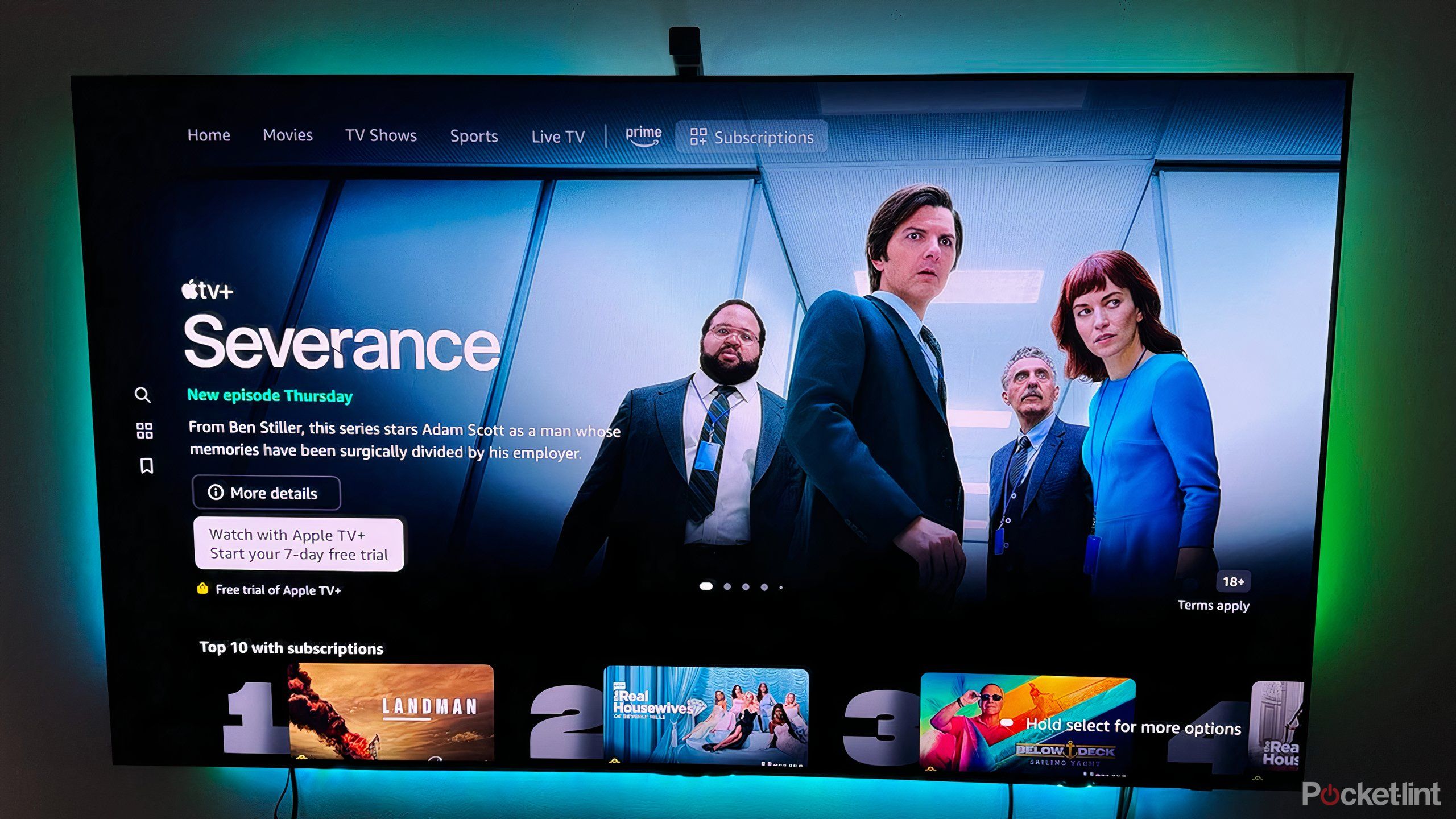Summary
- Amazon promotes its products and services in Prime originals.
- Apple protects its brand image on Apple TV+.
- Netflix and Disney leverage stars and shows across its catalog.
There’s really no world in which paying for an ad-supported streaming service is a worthwhile investment. The money companies make off of advertisements before, during, and after titles is more profitable for services than subscribers who pay for ad-free subscriptions, especially as prices keep going up and an increasing number of commercials are pushed onto viewers. Which has led to an interesting development in the world of streaming.
Even though ad-free consumers are paying more, streaming companies are losing money on these consumers, since they aren’t generating any ad revenue. However, several streamers have found a rather unique way to close this revenue gap. Ads in ad-free streaming. It sounds made up, but unfortunately it is very real, and is something you won’t be able to unsee once you know it’s there.
Amazon integrates its services into Prime
Shop easily while you watch
One of the worst culprits for showcasing ads is Amazon Prime Video, a streaming service that is one small part of an interconnected network of omnipresent services, products, and devices. While subscribers can opt out of ads that pop up before and during titles on Prime, you’re still going to get ads while you’re watching a show or movie.
Because Amazon wants to make online shopping as quick, easy, and thoughtless as possible, you’ll soon be able to buy things right from the show you’re watching. Amazon has discussed a mechanism that will allow viewers to pause programming and select items they like on screen, whether it’s a piece of decor or clothing, and then quickly cash out on their account. That means you’re going to see a lot more products popping up in awkward, disorienting, and annoying ways.
The few people who watched Prime’s remake of The War of the Worlds know this all too well. The movie is essentially a 90-minute commercial for Amazon, promoting its services and touting a drone delivery system, all while pretending it treats its employees well and that the data it has on everyone is actually a good thing. Sure.
Streamers will increase product placement
Personalized commercials sneak into shows
Another way ad-free viewers are inundated with ads is through creative, and sometimes even personalized, product placement. Now, implementing product placement into a scene can be seamless and sensible when done right. You can appreciate when someone at a bar orders a specific beer instead of just saying “beer,” which no one really does. It can feel a bit awkward, but it does make sense. The same goes for when a car pulls up on screen, and you see the front for a long period of time so you know exactly what the make is.
However, streaming services can be a lot more creative with ads, even after a show or movie has finished filming. Products can be added in to what you’re watching as you’re watching it; and it’s not just random, either. All the data collected on you can determine what that product is. Billboards or posters in the background of shows can be altered specifically to you show an ad. This technology has been around for a few years, and as it continues to progress, the ads that appear will become more widespread and intimate. And uncomfortable.
Services always protect their brand
Products and devices are given positive light
Streaming services are going to protect their brand as much as possible, and that’s especially true for those services that do a lot of other things. This is the case for Apple TV+, which makes a few very good shows and a bunch of shows that are pretty mediocre. Apple makes sure to protect its brand by both showing off its products where it can but also making sure no one is ever frustrated by its products on the screen.
Characters on Apple TV+ shows, at least the ones that exist in the modern age, use iPhones wherever possible. And you won’t catch any of them destroying an iPhone in a fit of rage.
Increased corporate synergy
Services employ crossovers and self-promotion
Another form of advertising you simply can’t avoid is increasing corporate assets and synergistic storytelling. This can be both good and bad. On the one hand, if there is a Netflix star or character you really like, and they pop up elsewhere, that can be fun. Riverdale and Sabrina crossing over can be fun for viewers of that wild universe. However, on the negative side, when Disney shoves characters from The Simpsons everywhere in the Disney universe, including as characters in a live NFL game, it can get old, fast.
Services keep you glued to their suggestions
There are a lot of promotions within a service, even if they’re ad-free, that you’re going to be forced to deal with. For some reason, trailers can sometimes occupy this weird space among subscription tiers. Sometimes they can be counted as ads and sometimes not, which is why some services will still promote trailers before certain shows. They’re also going to make it much easier to find new shows they’ve pumped a lot of money into rather than older titles they don’t care much about.
Elsewhere, the continue-watching feature is a terrific invention. However, some services abuse it. While Netflix gives you a bit of time to reflect on what you’ve just watched, offer a rating, and take a look at related titles, Amazon Prime gives you a handful of seconds to grab the remote before a new, often unrelated title starts to play. This aggressive push is just another way to keep you glued into the service and succumbing to its desires instead of your own.












